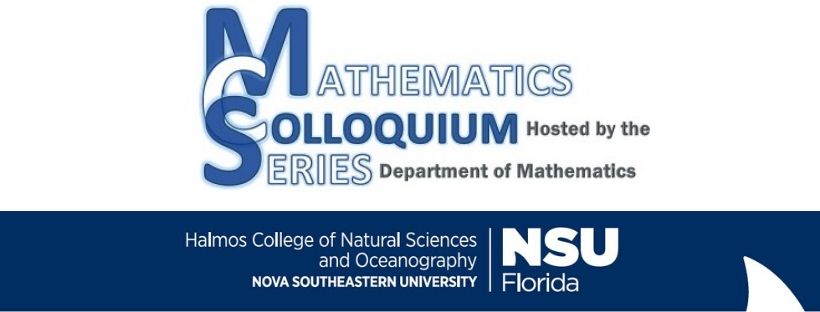Toxic Assets and Financial Crises
Description
This talk will begin with a brief introduction to risk-neutral pricing of financial derivatives—such as bonds, options, and credit default swaps—using the Black-Scholes-Merton math model. Using these ideas, Chadam will then explore areas of concern in the equity and bond markets. In particular, he will discuss insider trading in the recent sale of H. J. Heinz, and examine the topics of exchange-traded funds (ETFs) and emerging instabilities in bond markets.
If time permits, Chadam will discuss how mathematical methods might be used to understand contagion in networks of financial institutions, the functioning of dark markets and high-frequency trading, and commodity markets and sustainability.
Date of Event
March 15, 2013 12 - 1:00 PM
Location
Carl DeSantis Building, Room 1047, 3301 College Ave., Fort Lauderdale (main campus)
NSU News Release Link
http://nsunews.nova.edu/guest-lecture-explain-math-todays-financial-market-march-15/
Toxic Assets and Financial Crises
Carl DeSantis Building, Room 1047, 3301 College Ave., Fort Lauderdale (main campus)
This talk will begin with a brief introduction to risk-neutral pricing of financial derivatives—such as bonds, options, and credit default swaps—using the Black-Scholes-Merton math model. Using these ideas, Chadam will then explore areas of concern in the equity and bond markets. In particular, he will discuss insider trading in the recent sale of H. J. Heinz, and examine the topics of exchange-traded funds (ETFs) and emerging instabilities in bond markets.
If time permits, Chadam will discuss how mathematical methods might be used to understand contagion in networks of financial institutions, the functioning of dark markets and high-frequency trading, and commodity markets and sustainability.
https://nsuworks.nova.edu/mathematics_colloquium/ay_2012-2013/events/3



Presenter Bio
John Chadam, Ph.D., is a professor of mathematics at the University of Pittsburgh (Pitt). He earned his doctoral degree from the Massachusetts Institute of Technology, and his research in the field of math finance is highly regarded. Chadam served as chair and graduate director of Pitt’s Department of Mathematics for several years and founded the university’s Bachelor of Science in Actuarial Mathematics program.